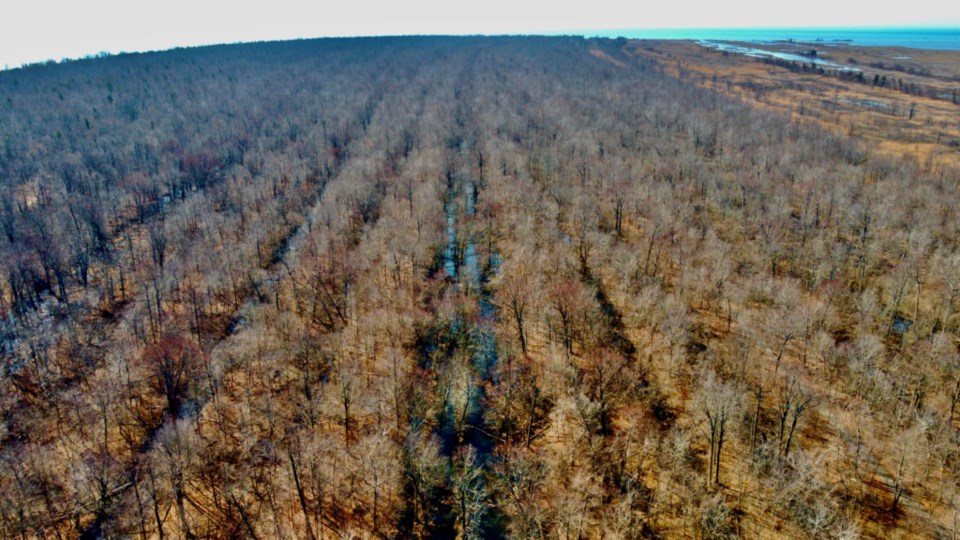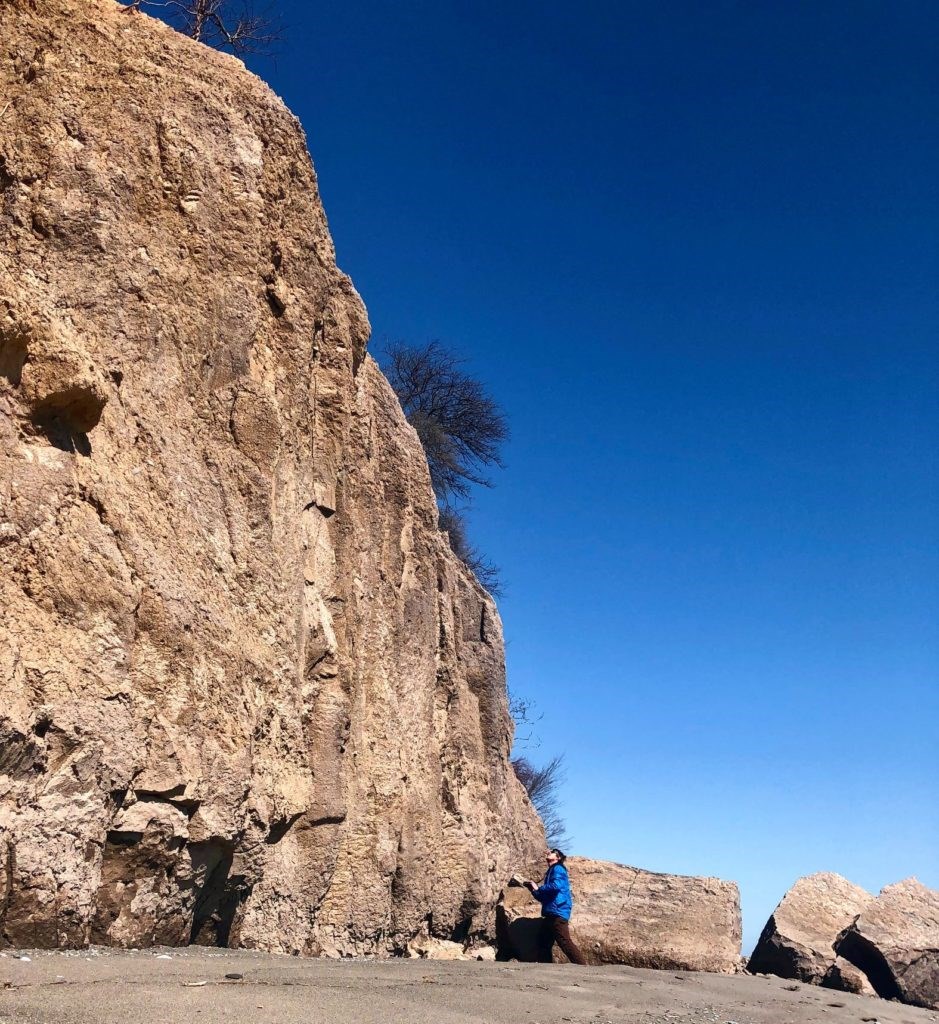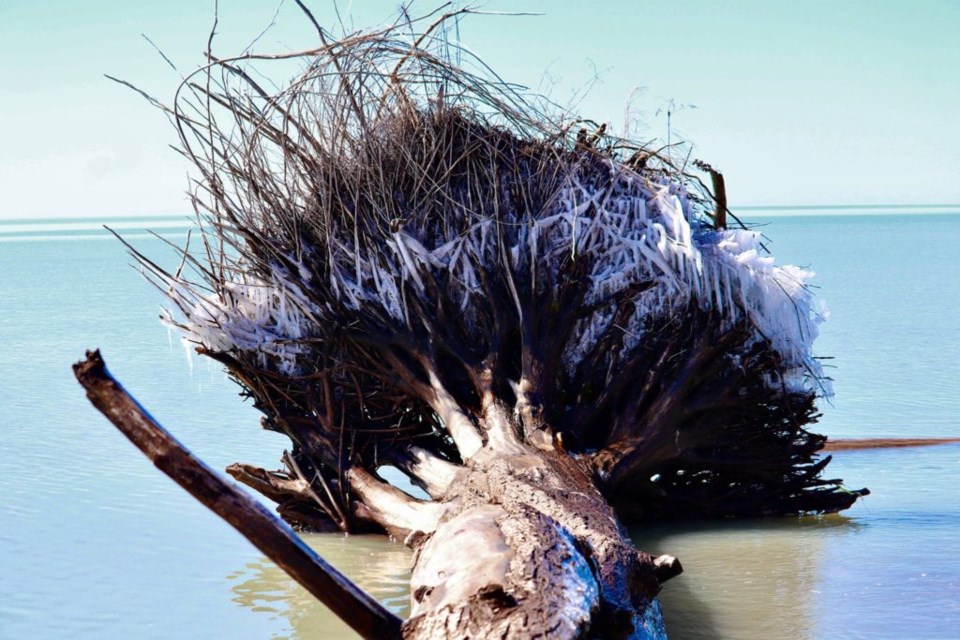
Losing daylight, I’m cruising further west on Highway 3’s endless straight roads. Departing directly from work, the van camp setup is in its prime for spring exploration in Rondeau Provincial Park.
The eight-kilometre giant protrusion of land into the blue abyss of Lake Erie I’m heading toward is called a sand spit.
My draw to this unusual peninsula, created by over 10,000 years of powerful waves and moving soil, was its appreciably high biodiversity. Ontario’s second-oldest provincial park is home to more nationally rare or threatened species than the remainder of the province.
This is largely because it’s located on Canada’s south coast, which is essentially Lake Erie’s forever changing shoreline. Just like here in Niagara-on-the-Lake, Rondeau Provincial Park is part of the Carolinian Forest zone, where we find the country’s highest species richness.
Five-lined skinks (our only lizard in the province), eastern hog-nose snakes, spiny softshell turtles, and Ontario’s largest population of breeding prothonotary warblers are just a handful of rare species which call Rondeau Park’s habitats a protected home.
One way to set yourself up for a world of surprises is to enter a new location for the first time at night. Driving through the awkward, open gate into the park, I was greeted by a maze of cottages and deer in headlights. Literally. After rounding the corner on nearly a dozen nonchalant deer, I tried to find a park backroad or two that I had previously scoped out on Google Earth. I just needed a place to park the van and crawl into the back for a sleep, no trouble to anyone or the hoofed night wanderers.
Alas, I accepted that I would be bothered no matter where I parked in the area. Adapting on the fly has been the theme of the past year or so, so I embraced the unusual plot twist of checking into a tiny motel at around 10 p.m.

At the crack of dawn, I chiselled the icy film off of my windshield and headed back to the park. The friendly motel owners tipped me off as to where I could find a resident eagle nest. They told me that on the way to the park, I would have to make a left, a left, a right, a quick right, by a house, and then you see the bush, or something like that. Locals out here refer to tracts of forest as “the bush,” and that was the conversational clue that allowed me to spot the giant wooden nest from the road while driving.
I had the pleasure of pulling over on this backroad and filming both the nest and the bald eagle in flight. I thanked the motel owner aloud, and hopped back into the van.
I parked in the closest public spot I could find near the park boundary, and then proceeded to hike in with a day’s worth of food, two cameras, and other gear in my backpack.
At first, you walk by a series of old, quaint cottages which line the handful of beautiful backroads at the front of the park. Already, the tulip trees and red oaks are appreciably bigger than any tree stand I know in Niagara.
The cottages sit plunked in linear fashion along this peninsula’s eastern shore. Here, the beach is idyllic and endlessly sandy. This is one of the few provincial parks which allows a resident cottage establishment within park boundaries. This was evidenced by the modest dwellings and spooky churches tucked into the forests on the park roads. One step in from the other side of the cottages puts you into a world of rolling sand forests with stagnant wetlands sunken in between.
As you can see in the photo I snapped using a drone, the wetland and ridge features of this enormous 32-square kilometre landscape stands as southern Ontario’s largest remaining tract of Carolinian Forest. Beach on one side, wetlands and woods in the middle, and a gentle transition into a marsh on the opposite side. It sets the stage for a noteworthy variety of habitats, and therefore species, to coexist.

I love the graduating contrasts of finding these places on a map, seeing them from above, and then exploring them on foot. A satellite image, to a drone flight, to standing in the middle of it all in complete silence by yourself.
Ultimately, these are my favourite moments. That strange reality of how an exciting idea has led me to standing in this moment. Off the trails, I continue to stand still.
The sun was rising from the east with a certain confidence. It is the first day of spring. Without interruption, the ultraviolet rays and warm sunlight were being absorbed by the exposed leaf litter and dark logs. With an ear and hand closer to the forest floor, all I hear is a pitter patter, which resembles rain drops. The sound is coming from the ground up, as worms, crickets, and salamanders begin to rummage their energized bodies beneath the leaves. In a couple hours, the forest floor will turn into a giant heat pad. Snakes will emerge out of hibernation and bask on the toasty dry leaves, while birds, such as the nationally rare acadian flycatcher, might snack on the insects attracted to the sunny surface.
The vernal pools line the impossibly linear trenches between the sand ridge forests. The consistency in this landscape, plus some highly memorable trees — the size of which still astounds me — helped guide me through this eerie and precious environment. I found an eastern red-backed salamander, more than a dozen eastern garter snakes, and listened to sandhill cranes and spring peepers tout their haunting, seasonal calls.
For two days, I floated around in these ancient slough forests, which eventually led to a beach with summer-like sand temperatures. I checked under logs, I sat and observed, and periodically filmed snippets for an ongoing Hidden Corners episode.
Sunday afternoon, I cruised back to Niagara with cameras full of memory and a mind full of memories. Their batteries had run out, but mine had certainly recharged.
On an end note, in case this is a thought someone needed to hear, it never ceases to amaze me how mentally and physically refreshing time outdoors can be. Inhaling that beautiful spring air and experiencing the quietly noisy ecosystem had me feeling good to go for the work week ahead.
Right here in NOTL, we have our own tulip trees and free trails to access at anytime as well.